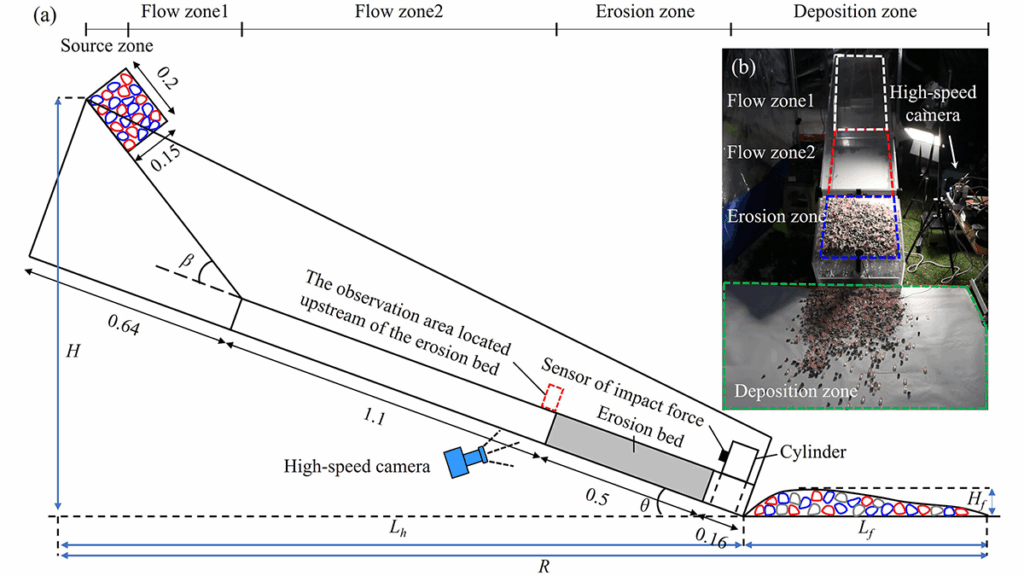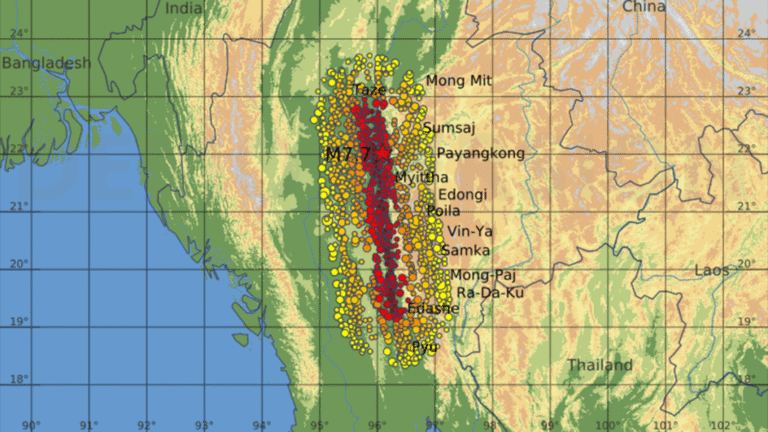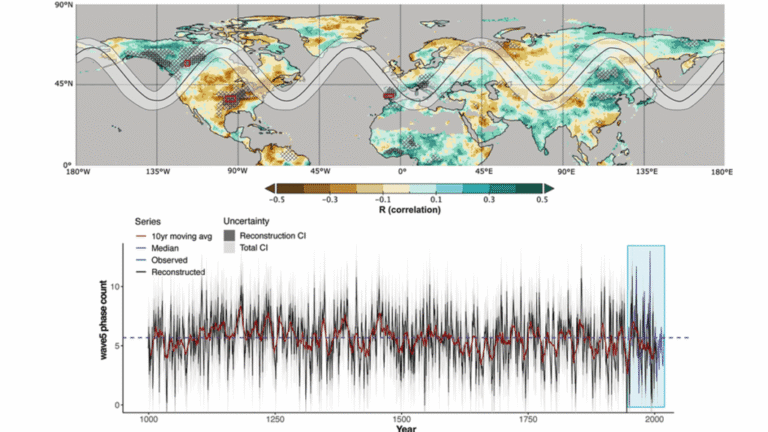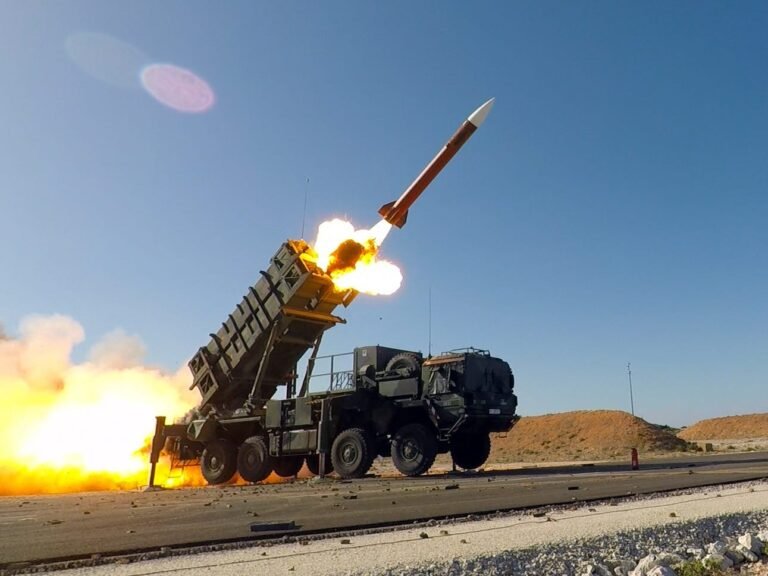

Editors’ Highlights are summaries of recent papers by AGU’s journal editors.
Source: Journal of Geophysical Research: Earth Surface
Cold regions with mountainous terrain can host a multitude of landslide hazards, including rock-ice avalanches. These mass movements are particularly dangerous, as the presence of ice can amplify the potential for the flow to travel exceptional distances. A better understanding of rock-ice avalanche mobility necessitates consideration of how the flow interacts with the material (e.g., snow, ice, and rock) that is encountered as it travels downslope.
Peng et al. [2025] develop a unique suite of small-scale physical experiments that consider variations in the ice content of the initial gravel-ice flow mixture, the slope angle along which the flow travels, and the type of erodible material that the flow overrides. The authors find that the flows exhibit higher mobility when overriding snow and ice is present compared to gravel and that, regardless of the erodible material type that the flows override, higher flow erosion rates correspond to higher flow mobility. This study highlights that the entrainment of snow, ice, and rock can significantly affect the mobility of rock-ice avalanches and is likely an important mechanism to consider when developing frameworks for hazard assessment.
Citation: Peng, C., Li, X., Yuan, C., & Huang, Y. (2025). Insights into the dynamics of rock-ice avalanches from small-scale experiments with erodible beds. Journal of Geophysical Research: Earth Surface, 130, e2025JF008303. https://doi.org/10.1029/2025JF008303
—Matthew A. Thomas, Editor, JGR: Earth Surface
Text © 2025. The authors. CC BY-NC-ND 3.0
Except where otherwise noted, images are subject to copyright. Any reuse without express permission from the copyright owner is prohibited.






